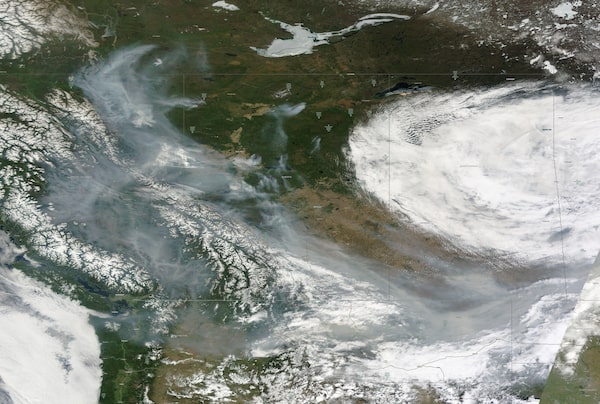
Smoke from wildfires burning in Western Canada can be seen in a satellite image on May 17.NASA Worldview/The Canadian Press
Emissions from wildfires hit a new record in 2021, producing more greenhouse gases than the oil and gas sector and heavy industry combined.
With a total estimated carbon footprint of 270 million tonnes, wildfire emissions were the single biggest source of greenhouse gases that year.
But they were not included when Canada tallied its total emissions for the year, because wildfires aren’t considered to be directly under human control.
Rebecca Hornbrook, an atmospheric chemist at the National Center for Atmospheric Research in Colorado, says wildfire emissions are in many ways part of the natural carbon cycle and shouldn’t be viewed the same way we see emissions from the burning of fossil fuels.
But she says the increased number of wildfires, and their growing intensity in a world impacted by climate change, are cause for concern.
Ms. Hornbrook says the air pollution from wildfires is something everyone should be watching for, noting the major fires burning in Alberta are affecting air quality thousands of kilometres away in Eastern Canada and the United States.